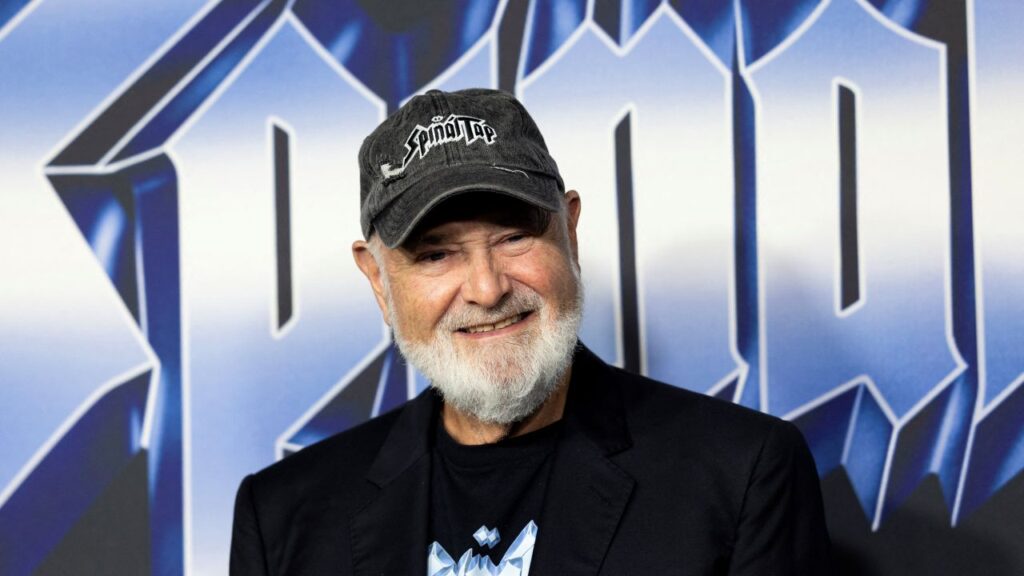A Tesla Cybertruck model is polished during an Environmental Protection Agency event in Washington, March 20, 2024. Since the electric behemoth started rolling off the Tesla factory floor last November, its hard-edged geometric form has indeed proved to be a love-it-or-hate-it proposition. (Pete Kiehart/The New York Times)

- The Tesla Cybertruck's unique design has polarized opinions since its launch, symbolizing Elon Musk's divisive public image.
- Critics often highlight the impracticality and aggressive driving of Cybertruck owners, while fans appreciate its futuristic appeal.
- Despite mixed reactions, the Cybertruck has a dedicated following and has become a status symbol, attracting celebrities and enthusiasts alike.
Share
|
Getting your Trinity Audio player ready...
|
If a car can embody the age that created it, the Tesla Cybertruck is, fittingly, a culture war on wheels.
When Tesla CEO Elon Musk unveiled it at a presentation in Los Angeles five years ago, he seemed to know that this hulking wedge of stainless steel would be polarizing.
“It’s not going to be for everyone,” he said at the time.
Since the electric behemoth started rolling off the Tesla factory floor last November, its hard-edged geometric form has indeed proved to be a love-it-or-hate-it proposition. And more than any other Tesla, the Cybertruck seems to represent Musk himself, an extremely online attention seeker loved by some and loathed by others.
Lately it has become a sport among the vehicle’s detractors to spot Cybertruck owners parking improperly and driving aggressively — and to generalize about the type of people who would identify themselves with such a conspicuous machine.
Related Story: Tesla CEO Elon Musk Appears to Confirm Delay in Aug. 8 Robotaxi Unveil Event to ...
A microgenre of online videos has also sprung up, showing Cybertrucks immobilized by sand, water and snow. The posts are often accompanied by commentary laden with schadenfreude.
Richard Zhang, a Cybertruck owner from Pittsburgh, said the vast majority of the interactions he has about his truck have been positive. But the negative ones are really, really negative.
“They are so filled with rage that they have lost all sense of human decency and respect,” Zhang, 30, said of the critics he has encountered.
Drew Magary, a writer for the San Francisco news site SFGate, recently took a Cybertruck out for a spin and hammered home some stereotypes about the vehicle’s fans in a satirical column.
“I fit the customer profile for one to a T,” Magary wrote. “I am tall. I am white. I am loud. I don’t really have many friends where I live. Most important, I desperately want people to think I’m cool.”
Consumers Express Personality Through Cars
Consumers have long expressed their personalities and lifestyles through their cars; think of the midlife crisis Corvette. But for many years there has not been an automobile — or any consumer product, really — that has provoked such strong reactions, that has carried so much loaded cultural meaning.
It all starts with Musk.
The years of the Cybertruck’s development roughly tracked the public transformation of the SpaceX boss. Once a Silicon Valley darling celebrated for his commitments to clean energy and space exploration, Musk has become the combative owner of X, formerly Twitter, and an enthusiastic supporter of former President Donald Trump.
Some see Musk as a swaggering champion of free speech and a technological pioneer who has turned some innovative notions into riches; others see him as a self-interested, conspiracy-mongering multibillionaire.
Related Story: Tesla’s Share of U.S. Electric Car Market Falls Below 50%
Musk’s public image hasn’t entirely eclipsed the Tesla brand. David Tracy, editor-in-chief of the car culture website The Autopian, said the company’s other offerings still exist apart — to a certain extent — from the man himself.
“They’re logical,” Tracy, an automotive engineer, said of the rest of the Tesla lineup, sleek, electric sedans that largely blend in with other vehicles on the road. “They are aerodynamic, they are efficient, they make sense from a usability standpoint. You can convince yourself anybody would have developed this car.”
Musk’s Politics May Repel Some Potential Buyers
Still, Musk’s politics may be repelling some potential Tesla buyers, contributing to a recent slump in sales. Perhaps that makes the drivers of Cybertrucks stick out even more. And in a culture obsessed with the political implications of consumer decisions, it’s probably inevitable that owning a Cybertruck reads as an endorsement of Musk and his ideas.
Tracy’s guardedly positive assessment drew such a volume of angry comments from Cybertruck haters that he quickly wrote a follow-up headlined “Reviewing The Tesla Cybertruck Is Totally Pointless.”
Related Story: Elon Musk Wins Back His $44.9 Billion Tesla Pay Package in Shareholder Vote
The visual references for the Cybertruck don’t come from contemporary car design. Instead, according to an internal Tesla mood board shared by Walter Isaacson, Musk’s biographer, the Cybertruck was inspired by the dystopian science fiction of the 1980s and 1990 — movies, anime and role-playing games that are holy texts of the geek imagination.
In these dark worlds, where corporations reign over a teeming and violent urban underclass, cars often function as armored weapons. (The Tesla mood board also featured images of tanks and fighter jets.) Musk has long boasted of the Cybertruck’s bulletproof exterior, and on the day of its unveiling, Franz von Holzhausen, Tesla’s chief designer, hit the door with a sledgehammer, leaving no dent. (A small metal ball thrown by von Holzhausen, however, did crack a window.)
Members of the Elite Tech
For members of an elite tech set preoccupied with problems of urban life in the Bay Area and elsewhere, it’s hard not to see the Cybertruck as a dream car — or a car in which they can navigate their nightmares.
Indeed, the vehicle’s fortresslike appearance and hefty price tag (it starts at around $80,000) seem to tap into contemporary anxieties around social disorder, according to Michael Rock, founding partner of the brand consultancy 2×4.
“It’s the embodiment of the culture of fear right now,” Rock said. “Why do you need a bulletproof car in the Hamptons? There’s a mentality to it. You’ve built this huge thing around you, and it’s all about this invading horde out there, and you’re in this bulletproof container.”
To the legions of passersby who owners say want to touch their Cybertrucks, sit on their Cybertrucks and take selfies with their Cybertrucks, the vehicle isn’t a political or cultural flashpoint. Instead it’s something rarer: a genuinely novel piece of mass design.
Related Story: Tesla CEO Elon Musk Appears to Confirm Delay in Aug. 8 Robotaxi Unveil Event to ...
In some circles, the vehicle’s unique appearance has made it into a coveted status symbol and an object of considerable fascination. Celebrities like Kim Kardashian and Serena Williams have been spotted in Cybertrucks. On YouTube, there is a robust, seemingly nonpartisan culture around modifying Cybertrucks and testing out their unusual features.
Indeed, so much attention has been paid to the right-wing tech connotations of the Cybertruck that it’s easy to forget that the thing is still a 6,000-pound electric vehicle — a kind of car once associated with coastal liberals.
Dwayne Sinclair, a 58-year-old systems engineer and Cybertruck owner from Redondo Beach, California, as well as a self-described leftist who dislikes Musk’s politics, said that none of the negative reactions he had gotten about his new truck had come from people he imagines are liberals.
Instead, he said, he has gotten flipped off a few times by men driving past in lifted trucks — like the Ford F-150, which has long been the most popular vehicle in the United States.
Sinclair was at a Tesla charging station recently when he heard the rumble of an engine.
“A guy in his big, super-heavy diesel truck drove up, and as he was driving past he started laughing,” Sinclair said. “It was weird. You’ll get someone just break out uncontrollably laughing.”
–
This article originally appeared in The New York Times.
By Joseph Bernstein/Pete Kiehart
c.2024 The New York Times Company


















